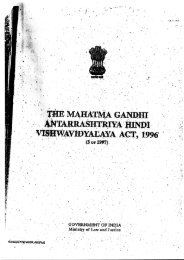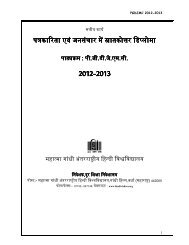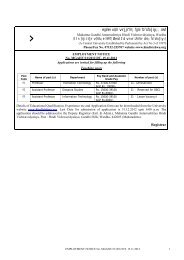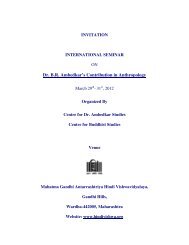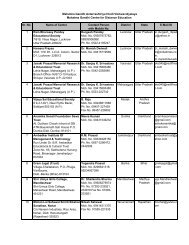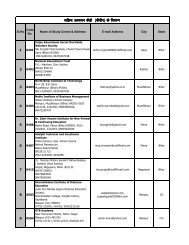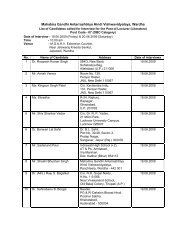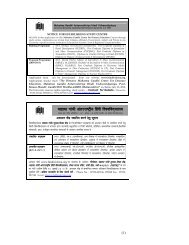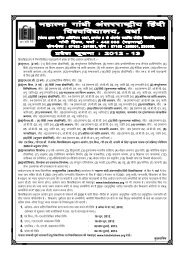Mamta Kalia
Mamta Kalia
Mamta Kalia
Create successful ePaper yourself
Turn your PDF publications into a flip-book with our unique Google optimized e-Paper software.
power and desire. There was a general<br />
drift from linguistic position to power<br />
and desire position but Lyotard<br />
reoriented from the latter to the former,<br />
celebrating desire even in its negative<br />
manifestations. Deleuge and Guattari<br />
perceive desire as a positive force but<br />
it could be appropriated for negative<br />
ends. Lyotard says in no uncertain terms<br />
that subject, representation, meaning,<br />
sign and truth are links in a chain that<br />
must be broken as a whole for political<br />
emancipation. Further, Lyotard rejects<br />
the binary opposition between science<br />
and narrative as science is also a kind<br />
of meta narrative. Three meta narratives<br />
legitimize science:<br />
a) creation of wealth- science is<br />
considered legitimate because it<br />
leads to progress and is essentially<br />
a drive for industrial- commercial<br />
growth.<br />
b) Working subject- science is<br />
considered to serve for the<br />
liberation of humanity from<br />
exploitation, drudgery etc.<br />
c) dialectics of spirit- science is<br />
considered legitimate because it<br />
leads to the emancipation of ideas.<br />
But these three meta narratives are<br />
falsified in real life situation as science<br />
has also given birth to the arms race,<br />
nuclear bomb, and attack on less powerful<br />
countries by super powers like US and<br />
USSR (now only one super power, US).<br />
The very claim of science for objectivity<br />
and value- neutrality is suspected and,<br />
therefore, Lyotard argues to ‘ abandon<br />
72 :: April-June 2010<br />
meta narratives and embrace the postmodern<br />
condition of uncertainty and<br />
relativity’.<br />
In his book ‘Complexity and<br />
Contradiction in Architecture’ (1966),<br />
Robert Venturi preferred for the ‘difficult<br />
unity of inclusion’ to modernism’s ‘easy<br />
unity of exclusion’. He also preferred<br />
elements like ‘hybrid’, to ‘pure’,<br />
‘ambiguous’ to ‘articulated’,<br />
conventional’ to ‘designed’,<br />
‘accommodating’ to ‘excluding’,<br />
‘redundant’ to ‘simple’, ‘inconsistent’ and<br />
‘equivocal’ to ‘direct and clear’, ‘perverse<br />
and impersonal’, ‘boring and interesting’<br />
and ‘vestigial and innovating’. Thus he<br />
stands for the ‘messy vitality over obvious<br />
unity’. Thus preferring ‘both-and’ to<br />
‘either-or’ categorisation, his architecture<br />
evokes many levels of meanings and<br />
combinations of focus, as various levels<br />
of meanings come in pairs and a new<br />
meaning is superimposed upon or merges<br />
with, an older meaning. To achieve double<br />
meaning, one needs to use conventions<br />
or ‘vestigial’ elements in new ways.<br />
Thus Venturi does not break completely<br />
with the immediate past, unlike some<br />
post-modernists, who focus only on the<br />
present. In the context of Hindi literature<br />
one may say that. Nirala and Muktibodh<br />
are as much significant as Dharmvir<br />
Bharati and Agyeya, representing<br />
different shades of Indian social reality<br />
in Hindi poetry.<br />
Later Charles Jenks developed a<br />
concept of ‘double-coded postmodernism’<br />
(‘The Language of Post-




